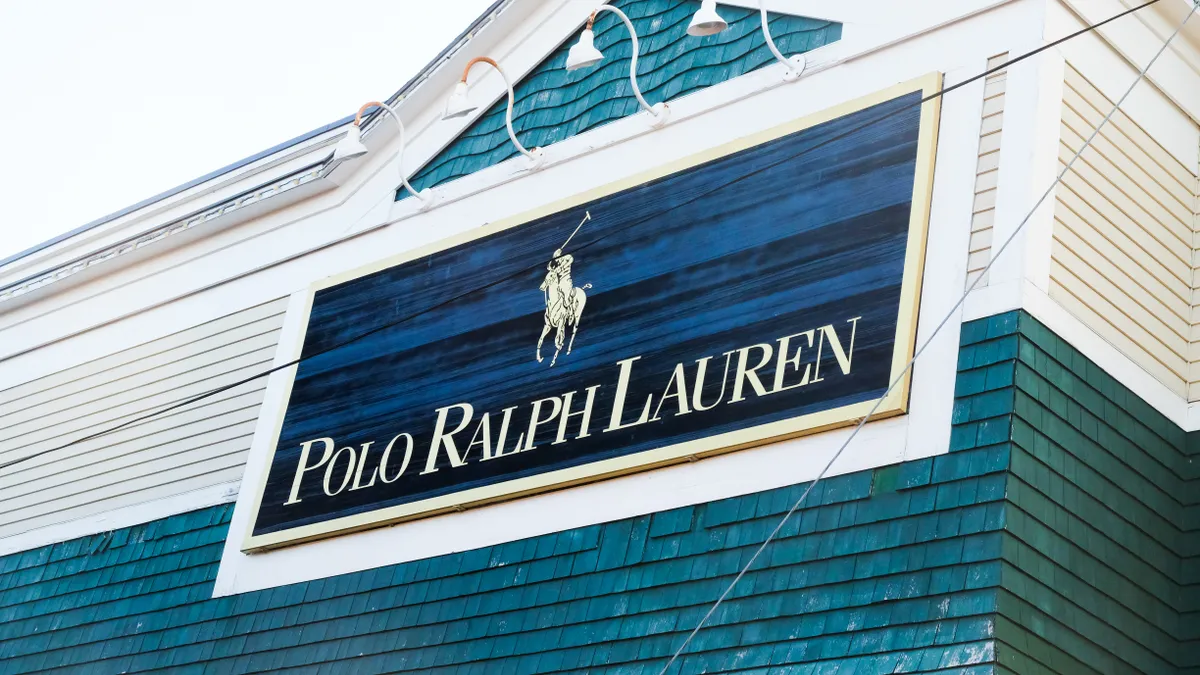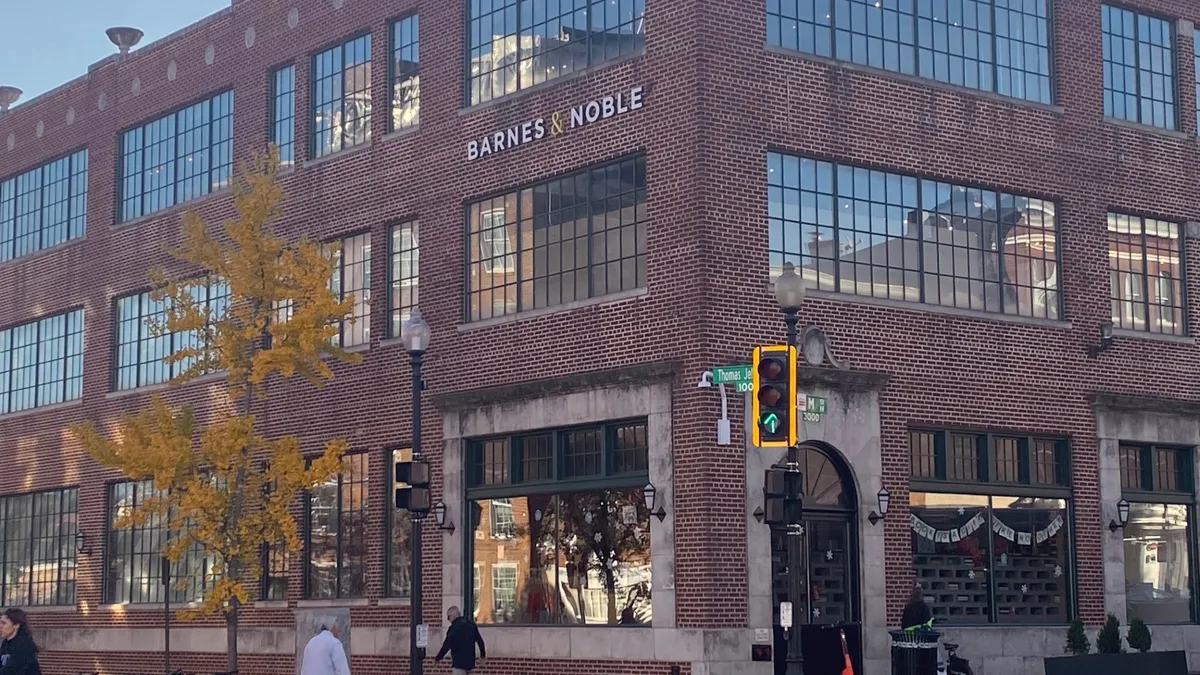Earlier this year, things were looking up for clothing retailers.
Month after month, specialty apparel and department stores this year have posted healthy gains, as occasions went back on the calendar and offices opened back up. Consumers, who quarter after quarter had little need to get out of their sweats, at long last refreshed their wardrobes.
But the respite may be over. Inflation is taking a toll on household budgets, so that discretionary spending for many is back on hold. Moreover, executives at some retailers noted that the boost that was coming from the federal government's pandemic-related support has mostly dried up.
Here's how some major apparel chains fared in their most recent quarter.
Abercrombie & Fitch Co.
The good news at Abercrombie & Fitch Co. is that its namesake brand seems to have successfully escaped the murky past that is the subject of an unflattering Netflix documentary. The bad news is that its Hollister brand is faltering, with Q1 sales down 3%, and that freight costs are squeezing margins companywide, with little sign of much relief for the rest of the year.
"While Hollister is very far from being a broken brand, it has been an engine of growth for Abercrombie & Fitch, so if it spins more slowly the effects will be felt," GlobalData Managing Director Neil Saunders said in emailed comments. In light of that, diversifying with new brands like Social Tourist, which is set to open a pop-up in Los Angeles, makes sense, he also said.
The company had its best Q1 topline performance since 2014, as net sales rose 4% year over year to $813 million, according to a company press release. That was driven by ongoing strength at the Abercrombie & Fitch brand, where net sales grew 13% and global sales were higher than expected, the company said. However, the company was in the red in the period, with a net loss of $16.5 million, from net income a year ago of $41.8 million. Inventories were up 45%, and operating margin failed to reach company expectations because of the higher-than-expected freight and product costs, per the release.
Abercrombie & Fitch Co. lowered expectations for the year. But it may have to trim more costs than it expects in order to achieve its margin goals, William Blair analysts said in a May 24 client note.
American Eagle Outfitters
Inflation and cold weather got the better of American Eagle in the first quarter. Total net revenue rose 2%, or $20 million, to $1 billion, with its supply chain acquisitions contributing about 3 percentage points, according to a company press release.
By brand, revenue at the company's namesake dropped 6% year over year to $686 million and rose 8% at Aerie to $322 million. Revenue at stores rose 2% year over year and 1% compared to 2019, while digital revenue fell 6% year over year and rose 48% compared to 2019.
Higher freight costs took a $35 million bite out of operating income, which fell 68.6% to $42 million. Net income fell 66.8% to $31.7 million. About a year ago, many consumers were still supported by federal pandemic relief payments and many retailers, including American Eagle, had tighter control on inventory. In its release last week, American Eagle said inventory was up 46%, but that it's adjusting to demand and clearing through excess spring goods in the second quarter.
"Lapping stimulus payments and pent-up demand, combined with rising inflation and higher gas prices weighed on our results," CEO Jay Schottenstein said, according to a Seeking Alpha transcript. "Adding to these pressures, the weather was unseasonably cold, dampening sales of spring goods. Higher freight and expenses deleveraged droves and operating profit results that was well below plan and what we are capable of delivering. In hindsight, our buys and overall plans were too optimistic for the current environment. We are taking swift measures to reset."
UBS analysts led by Jay Sole believe the company is likely to succeed in those efforts, once the macro environment settles down. The American Eagle brand is strong, and its "operational improvements position it well to adapt to the changing US retail environment," and Aerie's potential is underappreciated, Sole said.
Express
Express is making a comeback at a difficult time.
The retailer's net sales rose 30% year over year to $450.8 million, with consolidated comparable sales up 31%; including stores and e-commerce, comps rose 32% from last year, according to a company press release. Gross margin expanded 640 basis points, and merchandise margin expanded by 20 basis points, "despite the negative impact of $6.0 million of expense associated with ongoing supply chain challenges," the company said.
The company's net loss narrowed to $11.9 million from last year's $45.7 million. Inventory was up 40%.
In addition to its legacy business, the company is pinning some hope onto its two-year-old UpWest brand, where sales grew 68%, according to Express CEO Tim Baxter, speaking to analysts on Wednesday. The sub-brand opened four new stores this year, for 11 total, with plans for another four in 2022. Its wholesale expansion plans include "a partnership with a prominent national retailer that will expand the awareness and reach of UpWest more quickly," and be unveiled later this year, Baxter said, according to a Motley Fool transcript.
"UpWest continues to gain momentum, and is well-positioned to be a growth engine for our company," he said.
Gap Inc.
As Gap Inc. confronts the momentary macro headwinds buffeting all players, it has its own particular disadvantages — another bout of weakness at Old Navy, continued weakness at Gap and Banana Republic, and sales goals at Athleta that aren't yet in reach.
Q1 net sales at Old Navy fell 19%, with comps down 22%; net sales and comps at Gap both fell 11%; net sales at Athleta rose 4%, with comps down 7%. Banana Republic was an uncharacteristic standout, with net sales up 24%, comps up 27%, and lower discounts helping margins, per a Securities and Exchange Commission filing.
Macroeconomic pressures like supply chain woes and inflation are only making matters worse. Overall Gap Inc. Q1 net sales fell 13% year over year to $3.5 billion and comps fell 14%. E-commerce (39% of the business) fell 17%, with store sales down 10%. Gross margin contracted by 930 basis points year over year to 31.5%, and merchandise margins shrank by 760 basis points, including 480 basis points of incremental transitory air freight costs. The conglomerate swung into the red, with net loss of $162 million, down from last year’s $166 million net income.
During a conference call with analysts, the results led to questions about the potential for an Athleta spinoff, which CEO Sonia Syngal shot down. More immediately, if Athleta doesn't continue to grow, the whole company could be in trouble, according to a client note from Wells Fargo analysts led by Ike Boruchow.
"Following a very tough [2021] performance, [Gap Inc.] had a major opportunity to transform into a compelling recovery story once again in 2022," Boruchow said. "However, the persisting issues at [Old Navy] have caused a further loss of credibility, and [Gap Inc.] is now the first company under coverage to lower multiple times and see margins dip back well below pre-COVID levels."
Guess
Guess — whose embattled co-founder and creative director, Paul Marciano, last month withstood an activist investor challenge over sexual harassment allegations against him — had a mixed quarter, with more strength abroad than at home.
Total Q1 net revenue rose 14% year over year to $593 million, while net earnings fell more than 33% year over year to almost $8 million, according to a company press release. In addition to higher labor costs and currency headwinds, the company's legal and other professional fees rose more than 300% year over year to $4.4 million, representing a 0.7% hit to margins.
In the Americas, retail net sales rose 7%, operating margin shrank 4.4% to 8.6% and earnings declined 30%; wholesale there rose 50%, with margins flat (up 0.1% to 25.5%) and earnings up 51%.
Guess expects revenues to rise around 1% in the second quarter and 4% for the full year.
Ralph Lauren
Ralph Lauren joined the crop of apparel retailers beating their own expectations in the latest quarter, as Q4 revenue rose 18% to $1.5 billion and net income reached $24 million, from a $74 million net loss a year ago. E-commerce revenue in owned and wholesale grew low double-digits, according to a May 24 company press release. Operating margin reached 3.6%, 20 basis points above last year.
"Despite macro headwinds from COVID, the devastating war in Ukraine, and significant inflationary pressures, we expanded operating margin and each of our regions reported strong double-digit topline growth fueled by digital," Ralph Lauren CEO Patrice Louvet told analysts, according to a Seeking Alpha transcript. Louvet added later, "Our designers and our merchants have been spot-on with this post-pandemic style of dressing and our products are driving desirability as they leverage the full breadth of our lifestyle portfolio."
Marketing spend grew 48% to 9.5% of sales in the quarter, as the company "shifted a significant portion" of its budget "to accelerate our brand momentum and direct-to-consumer expansion coming out of the pandemic," Chief Financial Officer and Chief Operating Officer Jane Nielsen said on the call.
But, despite an extra week in its fiscal year, the brand's EBIT margins underperformed its pre-pandemic levels by about 250 to 350 basis points, according to BMO Capital Markets researchers, who found that the company's margins expanded most in areas where the direct-to-consumer penetration was lowest.
"We believe this is yet another example of the surprising conclusions we discovered in our recent 'DTC's Not All It's Cracked Up to Be' Deep Dive," BMO Managing Director Simeon Siegel said in emailed comments, referring to a report last year that revealed a meaningful upside to wholesale.
Urban Outfitters
Urban Outfitters, which runs a number of apparel brands as well as a food business, joined rivals in encountering high costs and combating supply chain issues that led inventory to swell.
The conglomerate saw its Q1 retail net sales rise 12%, and, with store traffic up, comps rose 11%. E-commerce sales dropped by mid-single-digits, according to a company press release. By brand, net sales rose 18% at Anthropologie, 15% at Free People and 1% at Urban Outfitters. Wholesale net sales rose 6%, helped by a 9% increase in Free People wholesale. The Nuuly rental unit's net sales rose by $15 million, "driven by a significant increase in our subscriber base," the company said.
Total inventory rose 31.9% year over year, with retail segment comparable inventory at cost up 35%. Higher transportation expenses and raw materials costs contributed to that, as did the company's extended lead times and decision to hold more goods due to ongoing global supply chain constraints. The inventory pileup and the sales results, which missed expectations, were both disappointing, according to a May 24 client note from Wells Fargo analysts led by Ike Boruchow.
"The bright spots were Anthro and Free People — both of which continue to execute ... however, their strength is not enough to offset weakness at [Urban Outfitters], along with mounting freight pressure as well," Boruchow wrote, adding later that the company's "performance is highly dependent on accurately forecasting and buying into fashion trends, though it has historically struggled to successfully execute this strategy consistently across their portfolio."





















